Walking through the bustling Gikomba market in Nairobi, it’s not uncommon to see piles of worn-out and discarded second-hand clothes strewn along the roadside. Vendors sort through bales of second-hand garments, salvaging what they can while tossing the unsellable pieces onto growing heaps of waste.
It’s a familiar sight in many African countries which continue to bear the brunt of second-hand clothes imports. Every day, hundreds of garments – too damaged or low-quality to be resold – are left to clog drainage systems, rot in landfills, or go up in toxic smoke. A 2023 report found that Kenya alone imports 300 million pieces of unsellable second-hand synthetic clothing annually, only to be dumped and landfilled.
The idea of regenerative fashion is reusing something that’s already there.
Amidst this growing textile waste crisis, a group of African women designers is driving a shift to solve this problem through regenerative fashion. Unlike mainstream ‘sustainability’ – a term that has been overused and whitewashed by fashion brands – regenerative fashion goes further. It restores, renews, and reimagines fashion as a system where nothing is wasted.
These designers are blending African cultural heritage with innovation, proving that fashion can be both stylish and truly sustainable. With the recently concluded Nairobi Fashion Week, which embraced regenerative fashion in Africa as its central theme, Black Ballad spoke to three designers who were featured in the fashion week.
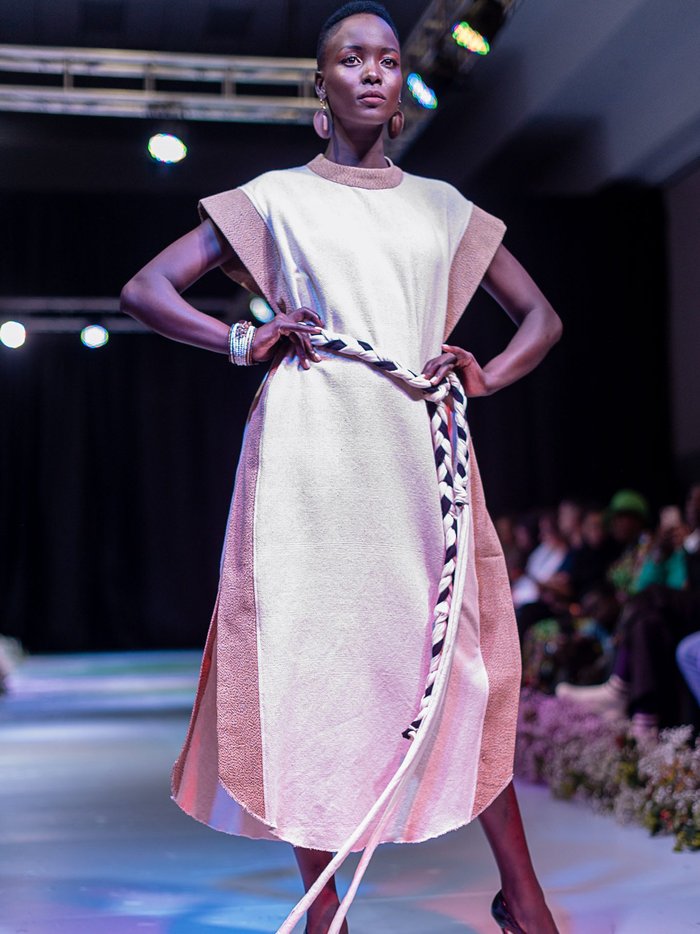
Sikoti Mbaitjongue & SOKOLATA
For a brand that has existed for almost three years now, SOKOLATA has quickly made a name for itself in the sustainable fashion space in Africa. Founded by Sikoti, who’s originally from Cameroon, the brand focuses on natural and organic African fabrics, creating cozy and casual styles for consumers.
Despite being passionate about the fashion space, Sikoti initially studied international economics in France and Germany. Her fashion journey would eventually take off in Berlin where she worked multiple jobs in retail and as a brand manager.
Sikoti also worked as a fashion buyer for Galeries Lafayette in Berlin, managing over 60 brands. Over time, however, she quickly became disillusioned by the rampant cultural appropriation she witnessed in the fast fashion industry – Western brands would draw inspiration from African and Indigenous cultures without crediting or fairly involving the communities they borrowed from.
“I would see prints and styles inspired by African heritage being marketed as ‘boho-chic’ or ‘exotic’ and not crediting the artisans who created them,” she recalled. Realising that she was a part of the fast fashion industry that was contributing towards this growing problem, she quit the industry altogether.
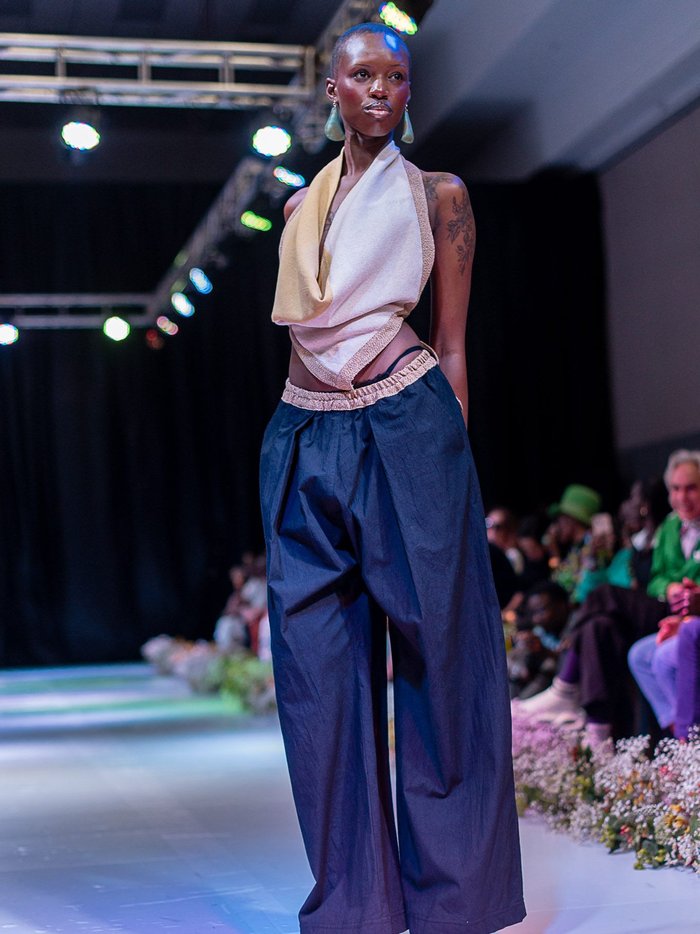
Disheartened, she left her job during the pandemic and set off on a journey across West and Central Africa, seeking out traditional fabrics. Her travels led her to Senegal, where she was captivated by the country’s vibrant fashion scene and artistic creativity.
“I felt really welcome in Dakar,” she said. “Art was everywhere on the streets, and I was just amazed.”
The idea for SOKOLATA wasn’t planned; frustration sparked its creation. Despite the rich creative scene, she noticed that many local designers in West Africa relied heavily on imported synthetic fabrics from Asia and Europe. This inspired her to build SOKOLATA, a brand rooted in African craftsmanship, using locally-sourced and organic materials, and ensuring fair compensation for artisans.
Initially, Sikoti was mainly sourcing her materials from a factory in Senegal that processes organic cotton and as a result, she began using pique knit fabric. She named her first collection, Léegi Léegi, meaning, see you in a bit in Wolof, the Senegalese language. After spending over a year traveling through West African countries, Sikoti discovered new suppliers and fabrics that shaped her next collections.
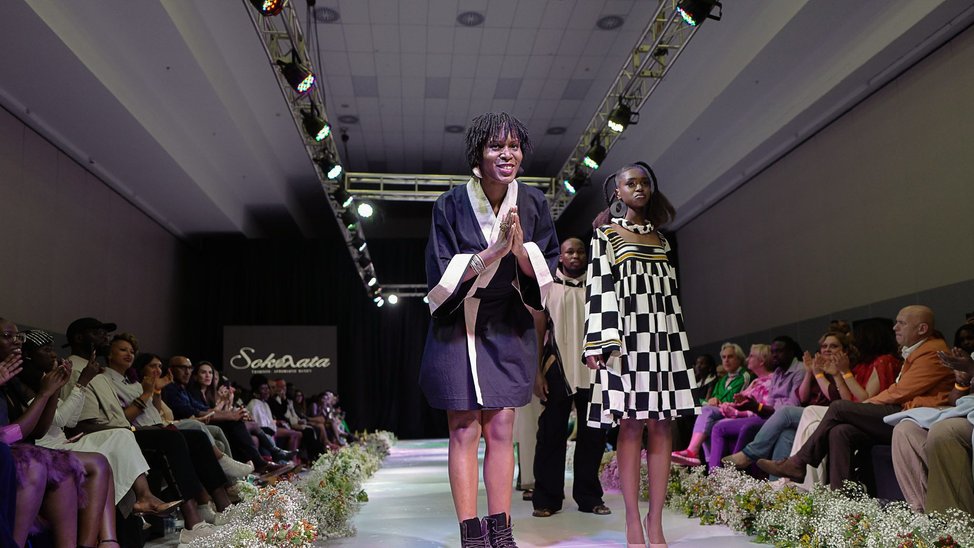
In Benin, she sourced raw woven cotton, inspiring her second collection, Avika F, meaning “cotton clouds” in the local language. This fabric allowed her to create structured pieces like shirts, cargo pants, and kimonos. Later, a trip to Kenya introduced her to handwoven cotton with vegetable dyeing, which defined the Polepole collection, meaning slowly in Swahili. This collection was showcased at the Nairobi Fashion Week as a tribute to her experience in Kenya.
However, sourcing remains her biggest challenge. With factories closing and logistics issues on the rise, obtaining quality fabrics can sometimes take months and be costly. Additionally, balancing sustainability with affordability for consumers has also been a challenge for her.
“We are a premium brand, not because we want to be but because the production process is expensive, and sometimes people don’t understand why it costs this price. This is a process of education as well. Since we are involved and committed to this regenerative fashion system, we have to advocate for it with our customers,” she said.
To Sikoti, long-term sustainable fashion isn’t just about preserving the planet by using natural and organic fabrics; it’s also about the social aspect – making sure every person can earn a good living and valuing the communities behind the production process.
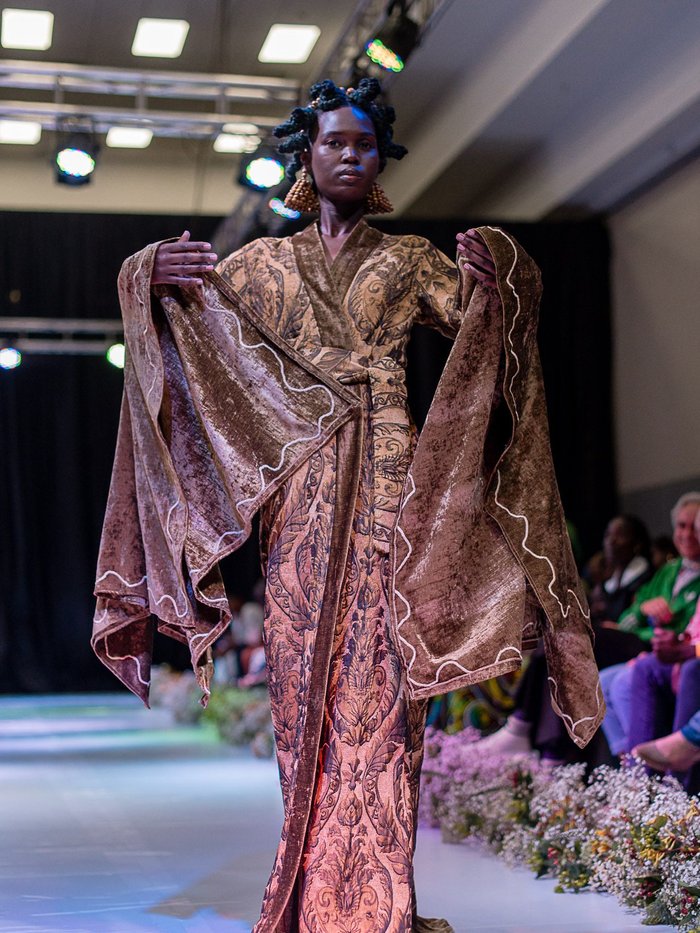
Nur M’nasria & Maisha by Nisria
Nur M’nasria, founder of Maisha by Nisria, has always had a knack for finding solutions to every problem she encounters. Originally from Tunisia, Nur launched a non-profit initiative in Kenya in 2016 called Nisria. Under this initiative, Maisha by Nisria emerged in 2021 as an umbrella project on upcycled fashion designed to address a critical issue in Kenya: young adults from marginalised communities lacking access to quality, fashionable clothing.
“I saw a need, and I wanted to provide a solution, and that solution turned into a brand,” Nur told Black Ballad. “I was inspired by my grandmother, who never threw anything away. She would turn a curtain into a dress, pillowcases into a sack, and towels into rags.”
This ethos shaped the foundation of Maisha by Nisria, which teaches individuals how to upcycle discarded fabrics into statement fashion pieces. The program started in Nakuru, Kenya, with one sewing machine, where a journey of exploring and experimenting began, eventually training around 25 people most of whom were women from the neighbouring area of Gilgil.
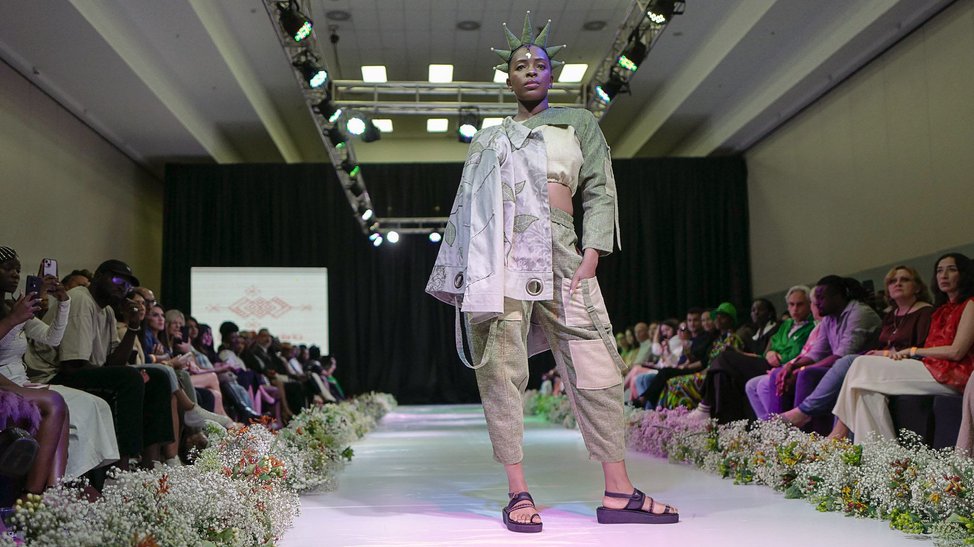
“The idea of regenerative fashion is reusing something that’s already there. We don’t turn something into a different material. We use the same material, but in a different way,” Nur explained. To ensure quality while minimising waste, her team of designers sources materials from mtumba (second-hand) markets in Nairobi and Nakuru, clothing swaps, and textile donations from partners like Mr Green and Africa Collect Textile (ACT).
To ensure the durability of the fabrics, Nur and her team prioritise stronger textiles such as denim, curtains, quilts, and bedsheets. Unlike traditional designers who plan first, Maisha by Nisria strikes a balance between creativity and repurposing by adapting designs to the materials available.
“You have the material, and then you work backward. Instead of designing first, we start with the material and figure out how to transform it,” Nur said. “Honestly, I am very grateful and lucky to have a great team. The creativity is impeccable.”
While Nur knows that upcycling alone cannot solve Africa’s textile waste crisis, she believes initiatives like hers will eventually contribute to a more sustainable fashion scene in Africa. In the near future, she envisions Maisha “going more in-depth into the academic side of things” with plans to expand its educational initiatives.
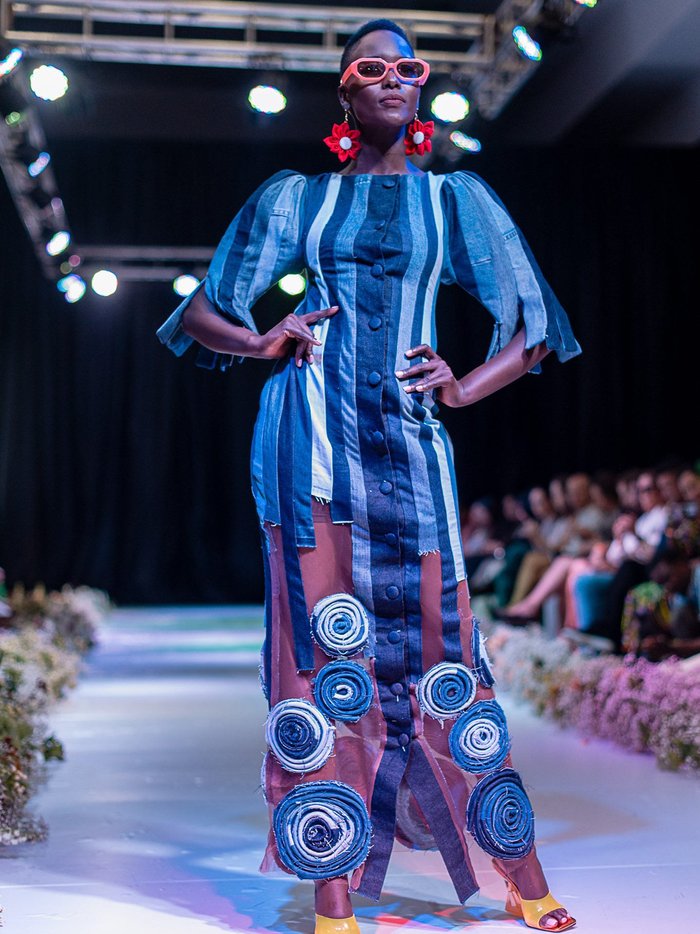
Eva Wambutu & Eva Wambutu
Sustainability and regenerative fashion isn’t just a fashion trend for Eva, it’s a responsibility. She began sketching designs as a child, but it was in her second year of university that she decided to take fashion seriously. Seeing firsthand how wasteful the industry could be, she committed to regenerative fashion, ensuring her work doesn’t negatively impact the environment.
Eva’s brand focuses on fine art-inspired womenswear, creating timeless pieces celebrating the feminine form.
“My designs aim to resonate with the wearer, making them feel confident, seen, and connected, not just through style, but through pieces that hold meaning and value,” she said.
Her collections are defined by strong silhouettes, and for Eva, there’s a science to that creative process. It starts with inspiration, sketching her designs, fabric research, and finally pattern-making to bring her concepts to life.
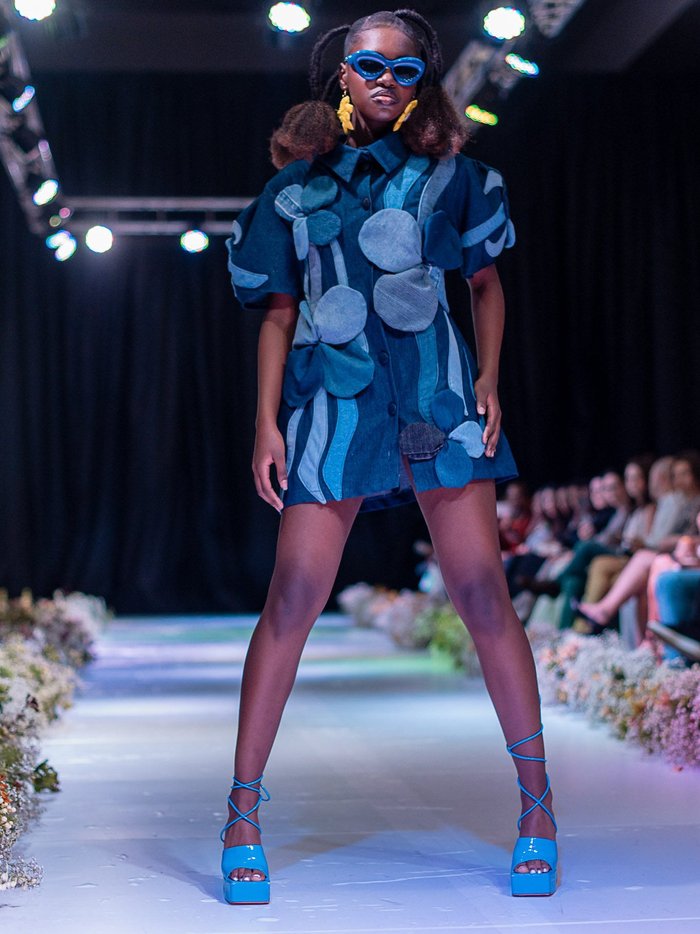
She not only sources biodegradable and eco-friendly fabrics locally but also repurposes and upcycles second-hand clothing. Her latest collection, for example, transforms upcycled denim into intricate striped patterns. Still, finding sustainable materials in Kenya isn’t easy.
“There isn’t enough local production to meet demand, and most biodegradable fabrics are imported mainly from India, making them expensive,” she said.
In the next five years, Eva hopes to be a voice in sustainable fashion, inspiring people to make conscious choices about protecting the environment.
“I want to show that clothes can be fashionable and functional, even with biodegradable fabrics,” she said. “My vision is to create techniques that are both fashion-forward and classic, proving that sustainability is not just about fabrics but also about working with the environment to foster economic growth and provide a lifeline for young designers.”
Header images by Daniel Kempf-Seifried
More fashion stories from black ballad

Soraya Odubeko
Black Women Designers To Look Out For At London Fashion Week
Tuesday 18 February 2025 8:00 AM

Tobi Oredein
Founder's Letter: The Problem W/ Naomi's Response To The PLT Backlash
Sunday 10 September 2023 11:00 PM
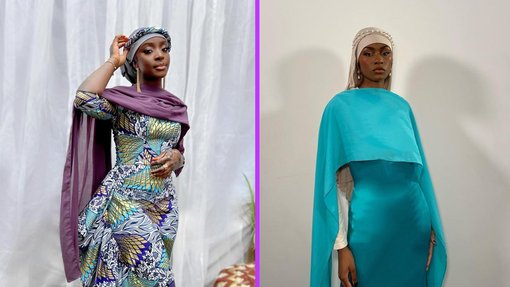
Bashirat Oladele
Faith & Fashion: Black Muslim Women On Celebrating Eid
Wednesday 28 June 2023 8:00 AM
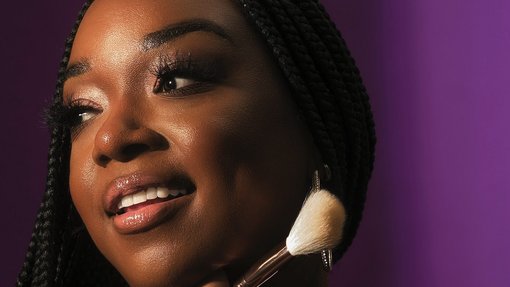
Henrietta Shirazu
Navigating Desirability Politics & Fashion As A Professional With ADHD
Tuesday 28 March 2023 8:00 AM